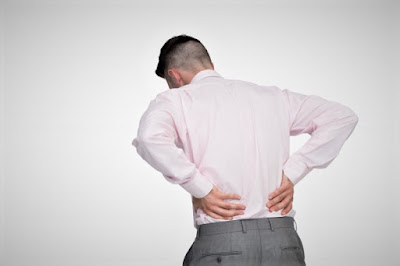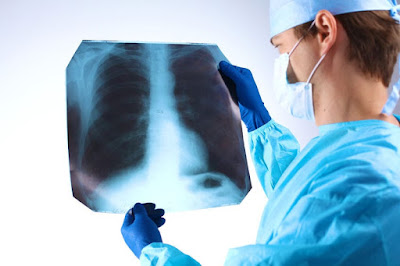Back pain: Causes and Symptoms
Back pain is a common reason for absence from work and for seeking medical treatment from the best hospital in Nagpur. It can be uncomfortable and debilitating. It can result from injury, activity and some medical conditions. Back pain can affect people of any age, for different reasons. As people get older, the chance of developing lower back pain increases, due to factors such as previous occupation and degenerative disk disease.
Lower back pain may be linked to the bony lumbar spine, discs between the vertebrae, ligaments around the spine and discs, spinal cord and nerves, lower back muscles, abdominal and pelvic internal organs, and the skin around the lumbar area.
Pain in the upper back may be due to disorders of the aorta, tumors in the chest, and spine inflammation.
Causes
The human back is composed of a complex structure of muscles, ligaments, tendons, disks, and bones, which work together to support the body and enable us to move around. The segments of the spine are cushioned with cartilage-like pads called disks. Doctors from the multispeciality hospital in Nagpur suggest that problems with any of these components can lead to back pain. In some cases of back pain, its cause remains unclear.
Damage can result from strain, medical conditions, and poor posture, among others.
Strain
Back pain commonly stems from strain, tension, or injury. Frequent causes of back pain are:
- strained muscles or ligaments
- a muscle spasm
- muscle tension
- damaged disks
- injuries, fractures, or falls
Activities that can lead to strains or spasms include:
- lifting something improperly
- lifting something that is too heavy
- making an abrupt and awkward movement
Structural problems
A number of structural problems may also result in back pain.
Ruptured disks: Each vertebra in the spine is cushioned by disks. If the disk ruptures there will be more pressure on a nerve, resulting in back pain.
Bulging disks: In much the same way as ruptured disks, a bulging disk can result in more pressure on a nerve.
Sciatica: A sharp and shooting pain travels through the buttock and down the back of the leg, caused by a bulging or herniated disk pressing on a nerve.
Arthritis: Osteoarthritis can cause problems with the joints in the hips, lower back, and other places. In some cases, the space around the spinal cord narrows. This is known as spinal stenosis.
Abnormal curvature of the spine: If the spine curves in an unusual way, back pain can result. An example is a scoliosis, in which the spine curves to the side.
Osteoporosis: Bones, including the vertebrae of the spine, become brittle and porous, making compression fractures more likely.
Kidney problems: Kidney stones or kidney infection can cause back pain.
Other causes
Some medical conditions can lead to back pain, like:
Cauda equina syndrome: The cauda equina is a bundle of spinal nerve roots that arise from the lower end of the spinal cord. Symptoms include a dull pain in the lower back and upper buttocks, as well as numbness in the buttocks, genitalia, and thighs. There are sometimes bowel and bladder function disturbances.
Cancer of the spine: A tumor on the spine may press against a nerve, resulting in back pain.
Infection of the spine: A fever and a tender, warm area on the back could be due to an infection of the spine.
Other infections: Pelvic inflammatory disease, bladder, or kidney infections may also lead to back pain.
Sleep disorders: Individuals with sleep disorders are more likely to experience back pain, compared with others.
Shingles: An infection that can affect the nerves may lead to back pain. This depends on which nerves are affected.
Risk factors
The following factors are linked to a higher risk of developing low back pain:
- occupational activities
- pregnancy
- a sedentary lifestyle
- poor physical fitness
- older age
- obesity and excess weight
- smoking
- strenuous physical exercise or work, especially if done incorrectly
- genetic factors
- medical conditions, such as arthritis and cancer
Symptoms
The main symptom of back pain is an ache or pain anywhere in the back, and sometimes all the way down to the buttocks and legs. Some back issues can cause pain in other parts of the body, depending on the nerves affected. The pain often goes away without treatment, but if it occurs with any of the following, people should see their doctor from the best orthopedic hospital in Nagpur:
Prevention
Steps to lower the risk of developing back pain consist mainly of addressing some of the risk factors.
Exercise: Regular exercise helps build strength and control body weight. Guided, low-impact aerobic activities can boost heart health without straining or jerking the back. Before starting any exercise program, talk to a healthcare professional.
The main symptom of back pain is an ache or pain anywhere in the back, and sometimes all the way down to the buttocks and legs. Some back issues can cause pain in other parts of the body, depending on the nerves affected. The pain often goes away without treatment, but if it occurs with any of the following, people should see their doctor from the best orthopedic hospital in Nagpur:
- weight loss
- fever
- inflammation or swelling on the back
- persistent back pain, where lying down or resting does not help
- pain down the legs
- pain that reaches below the knees
- a recent injury, blow or trauma to the back
- urinary incontinence
- difficulty urinating
- fecal incontinence, or loss of control over bowel movements
- numbness around the genitals
- numbness around the anus
- numbness around the buttocks
Steps to lower the risk of developing back pain consist mainly of addressing some of the risk factors.
Exercise: Regular exercise helps build strength and control body weight. Guided, low-impact aerobic activities can boost heart health without straining or jerking the back. Before starting any exercise program, talk to a healthcare professional.
Bodyweight: The weight people carry and where they carry it affects the risk of developing back pain. The difference in back pain risk between obese and normal-weight individuals is considerable. People who carry their weight in the abdominal area versus the buttocks and hip area are also at greater risk.
Posture when standing: Make sure you have a neutral pelvic position. Stand upright, head facing forward, back straight, and balance your weight evenly on both feet. Keep your legs straight and your head in line with your spine.
Posture when sitting: A good seat for working should have good back support, armrests and a swivel base. When sitting, try to keep your knees and hips level and keep your feet flat on the floor, or use a footstool. You should ideally be able to sit upright with support in the small of your back. If you are using a keyboard, make sure your elbows are at right-angles and that your forearms are horizontal.
Lifting: When lifting things, use your legs to do the lifting, rather than your back. Keep your back as straight as you can, keeping your feet apart with one leg slightly forward so you can maintain balance. Bend only at the knees, hold the weight close to your body, and straighten the legs while changing the position of your back as little as possible.
Driving: It is important to have proper support for your back. Make sure the wing mirrors are properly positioned so you do not need to twist. The pedals should be squarely in front of your feet. If you are on a long journey, have plenty of breaks. Get out of the car and walk around.
Bed: You should have a mattress that keeps your spine straight, while at the same time supporting the weight of your shoulders and buttocks. Use a pillow, but not one that forces your neck into a steep angle.



Comments
Post a Comment